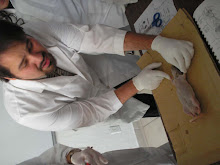On this class we talked about female body sexual organs, so heres one of the pictures the teacher explain: http://www.soc.ucsb.edu/
We start talking about the outer organs which were:
- Labia majora, and labia minora
- Clitoris: is like a heat sensor, it is important on sexual pleasure, it’s also call the “female pennies”.
- Vagina: is the passage way to the inside organs (connects inner organs with outer organs), it’s made of muscle, and it’s length it’s from 5 to 10 cm.
The outer organs an the vagina works as a filter, and regulates levels of PH, so some bacterias cannot live there, and some bacterias can that’s why there are infections right there, and sperms can live there.
These are some inner organs we spoke about: http://kvhs.nbed.nb.ca/
- Uterus: this part take care of the product of a pregnant, on this part also happens the process of menstruation.
- Cervix: connects the vagina with the uterus. This part isn’t flexible as the vagina, so it doesn’t let anything go trough.
- Fundus: is the upper part of the uterus
- Ovary: is connected with the uterus, is where female reproductive cells are produce
- Oviducts: this connect the uterus with the ovary, the ovule travel trough here. Also here starts the process of fecundation
- Infundibulum: (no it’s not a harry potter spell) the oviducts connect with this part to the ovary. The ovary retains in it’s place also with the suspensory ligament.
We also talked about some structure of the ovary:
http://academic.kellogg.cc.mi.
- Primary folicus: is the first period of the ovule.
- The secondary oocyte: is the ovule almost complete
- Corpus luteum: after the ovary is release it left like an scar, which can be used as a count of how many ovules the ovary has release.
We talked about the menstrual cycle:
http://www.womentowomen.com/
It’s a process of that occurs each 28 days. If an ovule is release and it’s not fecundated it need to bee throw it out. So when it’s first release from the ovary and then reach the uterus, it attach to the endometrium , this part feed the ovule with proteins and blood, to prepare it to be ready in case of a pregnance, and the endometrium wall start growing of blood, so if the the ovule isn’ fecundated it need to release all that blood and inside of that blood goes the ovule, here’s when the menstrual process occurs, and it hurts because the wall of blood it’s really attached , so it hurts when it’s release.
This are some hormones release during the menstrual cycle:
- FSH: (follicle stimulant hormone) it cause the ovule.
- LH: (luthinizant hormone) make the corpus lutheum for ovule.
- Progesteron: determines how thick is the endometrium.

No hay comentarios:
Publicar un comentario